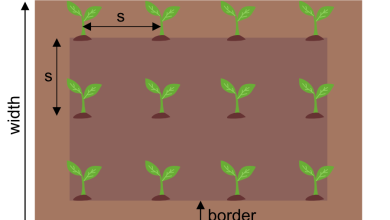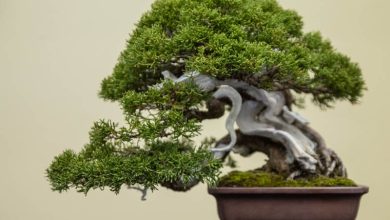Antirrhinum: [Care, Planting, Reproduction and Pruning]
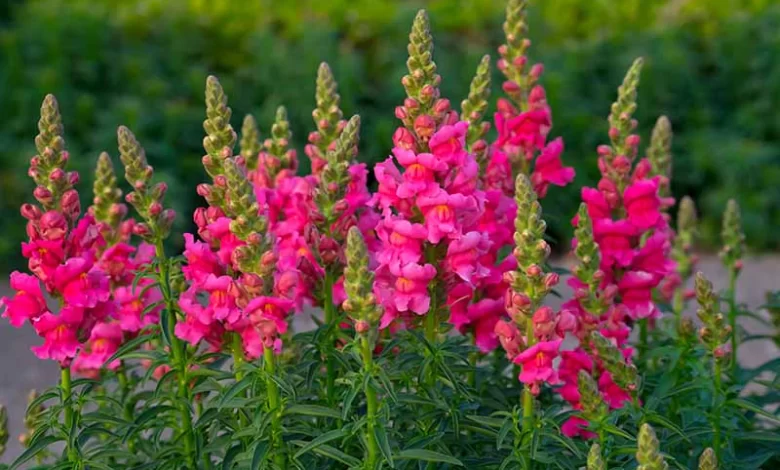
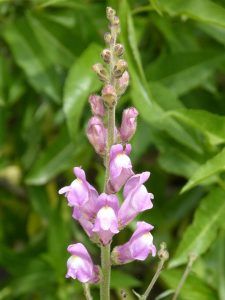 The Antirrhinum plant is popularly known as snapdragon or snapdragon, due to the interesting mouth shape of its flowers.
The Antirrhinum plant is popularly known as snapdragon or snapdragon, due to the interesting mouth shape of its flowers.
There are a little more than 350 species of this same family, so it is common to find versions of different colors and with varied characteristics.
It has a structure that is fantastic for decorating spaces and that is why we bring it to you today, so that you know everything about it and its care.
Have you already got ready to immerse yourself in the wonderful world of dragonaria? So let’s get to it.
Important points when sowing an Antirrhinum:
- When? In spring or summer, although it will give a late flowering.
- Where? Outdoors, where it receives a lot of sunlight.
- How do we prepare the land? Adding organic matter so that it has enough nutrients.
- How should we water? With watering can or drip.
- How often do you have to water? Between 3 and 4 times a week during the summer, reducing the rest of the year to 1 weekly.
- What care do you need? Fertilizations during the flowering season, pruning of damaged parts, protection from the cold of winter.
- What pests and diseases does it have? Although it tends to be very resistant, it can be attacked by fungi or bacteria that trigger rust or mold problems.
What is dragonaria?
Dragonaria is a beautiful plant that is used for decorative purposes due to the colorful characteristics of its blooms.It grows to a height that ranges from 15 to 120 centimeters in height, depending on the version in question.
As for the colors of its flowers, these can be red, yellow, pink or white, to put together beautiful compositions. Its popular name is due to the fact that the flowers are formed by two areas, one upper and one lower, which meet at a midpoint, making them look like lips.
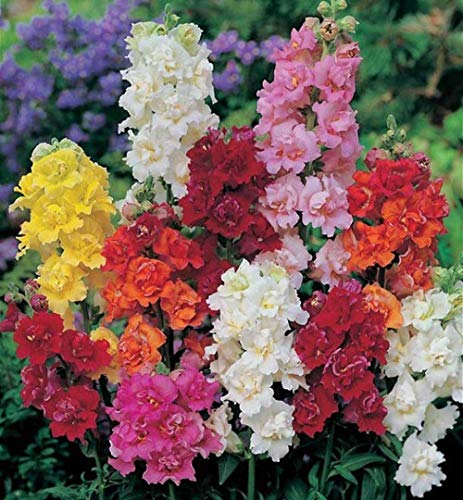
The leaves also have different characteristics in terms of their shape, although they maintain a dark green color in common.
What kind of plant is snapdragon?
Dragonaria is a type of perennial plant that can be annual or biennial depending on the specific species in question. It belongs to the family known as plantaginaceae and its origin is mainly in the Mediterranean area.
How to take care of the snapdragon?
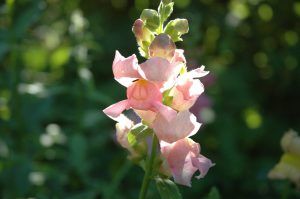 The issue of irrigation is one of the main care. It requires constant humidity but nothing that can flood.
The issue of irrigation is one of the main care. It requires constant humidity but nothing that can flood.
The most advisable thing is to establish a frequency of 3 or 4 irrigations a week in summer periods.
Blooms typically last into fall, meaning you may need a little more moisture at this time. However, in the winter you have to eliminate watering almost entirely, setting it to 1 per week, just to keep the substrate hydrated.
The snapdragon or snapdragon will need vitamin supplements to stay strong and beautiful, especially during flowering time. It is advisable to take advantage of a fertilizer for flowering plants and apply it with irrigation fortnightly throughout this period.
One of the best characteristics of the snapdragon is that its blooms last for long periods, starting in the spring and ending in the fall.
When is snapdragon planted?
The most normal thing is to work the seeds during the months of February or March and then proceed to transplant the seedling as soon as spring arrives. This implies that the germination process must be carried out in protected seedbeds to avoid inconveniences.
How is snapdragon planted?
To achieve a correct planting of the species, the first thing you will have to work on is the land, since it needs to have nutrients to develop. The incorporation of organic matter before planting will come in handy and you do not need to spend a single euro on it. Take advantage of homemade compost.
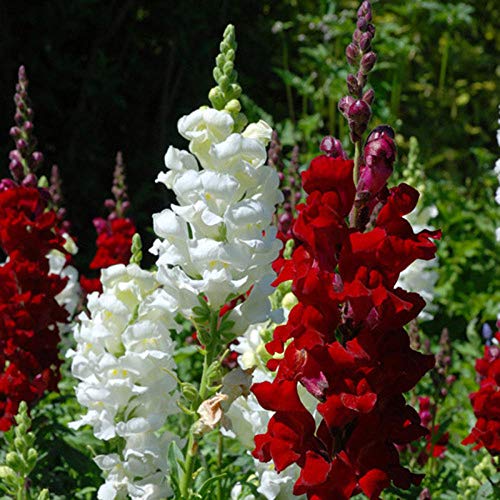
Another important detail has to do with the structural composition of the soil. It prefers clay soils rather than sandy ones.In addition, you have to ensure that you have exposure to the sun that occupies a large part of the day. It is a species of Mediterranean origin so the heat suits it well.
How does the snapdragon reproduce?
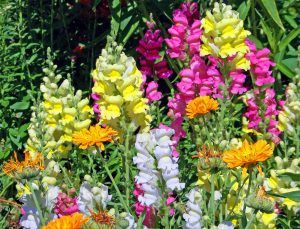 There are two approved methods for its reproduction that are: by means of seeds or by division of a plant.In the first type, the process is very simple and in most cases produces good results.
There are two approved methods for its reproduction that are: by means of seeds or by division of a plant.In the first type, the process is very simple and in most cases produces good results.
You just have to make sure to choose a plant that is in optimal conditions so that your new specimen will copy them and enjoy a beautiful flowering.
The problem is in the reproduction by means of seeds, since they are very prone to fungal attack. To get the seeds of a snapdragon to germinate, it is essential to carry out a process of sterilizing the soil beforehand and plant them in a pot or seedbed, preferably.
After the seedling begins to form, it will be time to transplant it to the place you prefer.
How do you prune the snapdragon plant?
Snapdragon pruning is not a care that requires special attention because it does not require much.The most normal thing is to remove, as in any other plant, all those parts that are damaged over the days, being a subject that is considered normal.
Included here are the leaves and stems that tend to dry with the passing of days, being an appropriate measure to prevent diseases. Dragonaria is an annual type plant that gives the possibility of extending its life up to two years as long as certain conditions are respected.
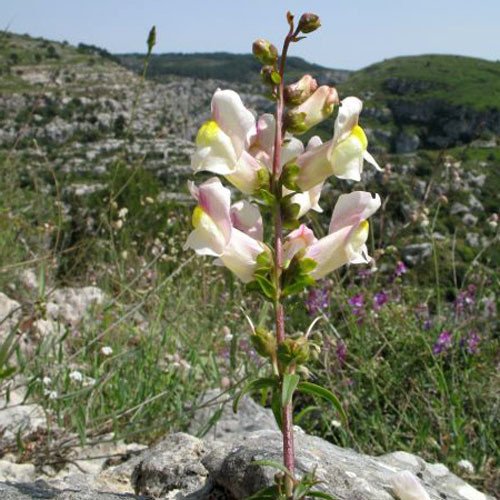
Here it is said that it is kept in a protected area during the course of winter because it does not tolerate extreme low temperatures. Another important point is to take care of fertilization and irrigation at the recommended times and take measures to prevent pests and diseases.
From the rest, it is a fairly easy plant to keep healthy, making it an ideal option for all those who are starting out in the world of gardening.
Bibliographic references
- Development and quality of inflorescences of Antirrhinum majus L. grown outdoors, JA Reyes-Montero, JA Gutiérrez-Espinosa… – Revista Chapingo…, 2009 – scielo.org.mx
- Effect of burnt rice husk substrates at 50% and 75% on the yield of three varieties of Antirrhinum majus L. in a greenhouse, BA Sislema Buñay – 2020 – dspace.espoch.edu.ec
- A new hybrid in the genus Antirrhinum L.(Plantaginaceae, Antirrhineae Chav.), PPF Gallego, RR Gimeno, EL Lumbreras… – Acta Botanica…, 2016 – dialnet.unirioja.es
- Effect of kanamycin on the germination and development of snapdragon (Antirrhinum majus), MI Terry López, JR Weiss, M Egea Gutiérrez-Cortines – 2016 – repository.upct.es
- Evaluation of indoleacetic acid and kinetin in the in vitro propagation of Snapdragon (Antirrhinum majus L.), F Sunshine – Journal of the Faculty of Agronomy of La …, 2007 – dialnet.unirioja.es

![Photo of Calendula: [Cultivation, Irrigation, Care, Pests and Diseases]](https://www.complete-gardening.com/wp-content/uploads/2022/08/calendula-cultivation-irrigation-care-pests-and-diseases-390x220.jpg)
